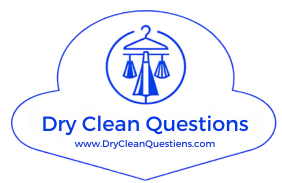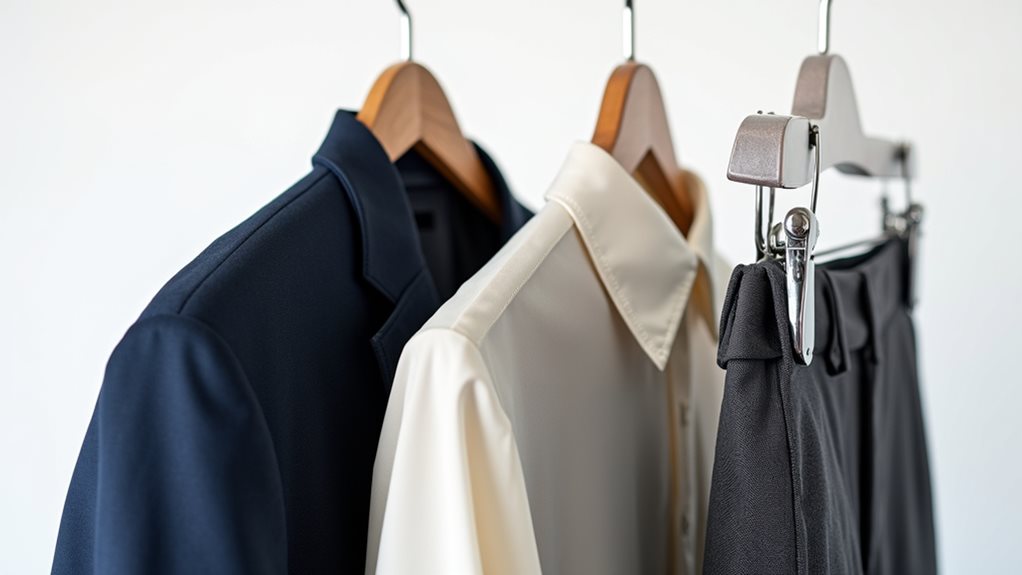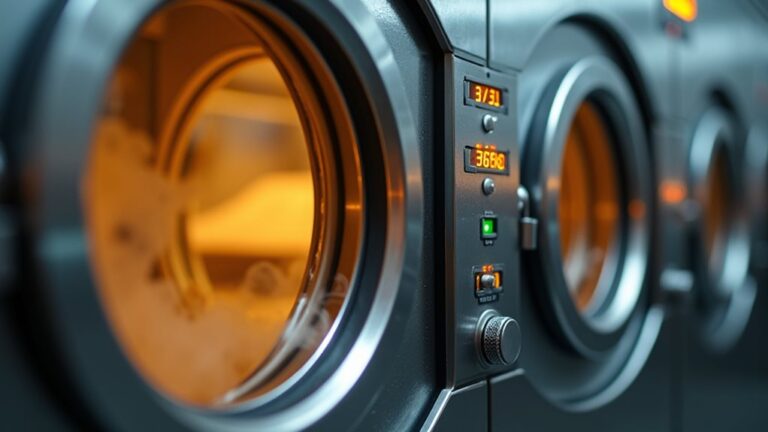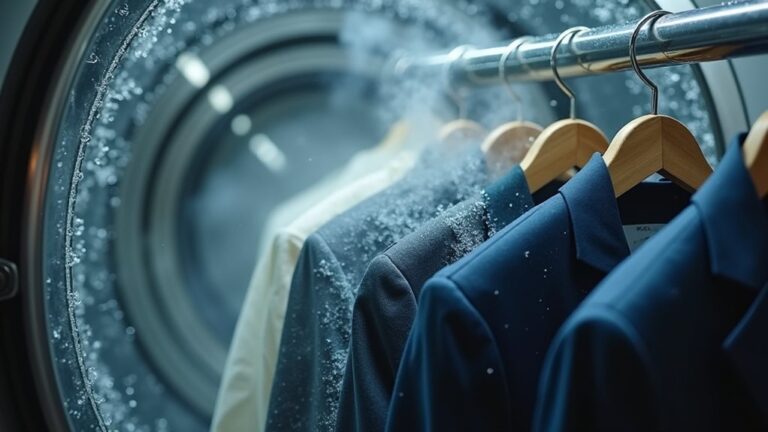Dry cleaning uses chemical solvents like perchloroethylene instead of water to clean your delicate garments, protecting fabrics that would shrink or fade in regular washing machines. You’ll find this process vital for silk blouses, wool suits, cashmere sweaters, and formal wear that can’t handle water’s harsh effects. Professional technicians inspect, pre-treat stains, clean with specialized machines, then press your clothes to perfection—and understanding when you truly need this service can save you money while preserving your wardrobe’s longevity.
The Science Behind Dry Cleaning Processes
When I first discovered what actually happens during dry cleaning, I’ll admit I was genuinely surprised – there’s no water involved at all, despite the name suggesting otherwise!
Instead, your clothes get submerged in a dry cleaning solvent like perc (perchloroethylene), which dissolves oils and grease that regular water can’t touch. The cleaning process involves gentle agitation that protects delicate fabrics while removing stubborn stains – think of it as a spa treatment for your favorite silk blouse!
What really impressed me was learning about solvent recovery, where these dry cleaning chemicals get recycled and reused.
Plus, newer environmentally friendly solvents and wet cleaning methods are emerging as safer alternatives, which honestly makes me feel better about dropping off my go-to blazer 😊
This method is especially crucial for structured garments like suits and formal wear that would lose their shape and tailoring if exposed to water and traditional washing.
Essential Steps in Professional Dry Cleaning
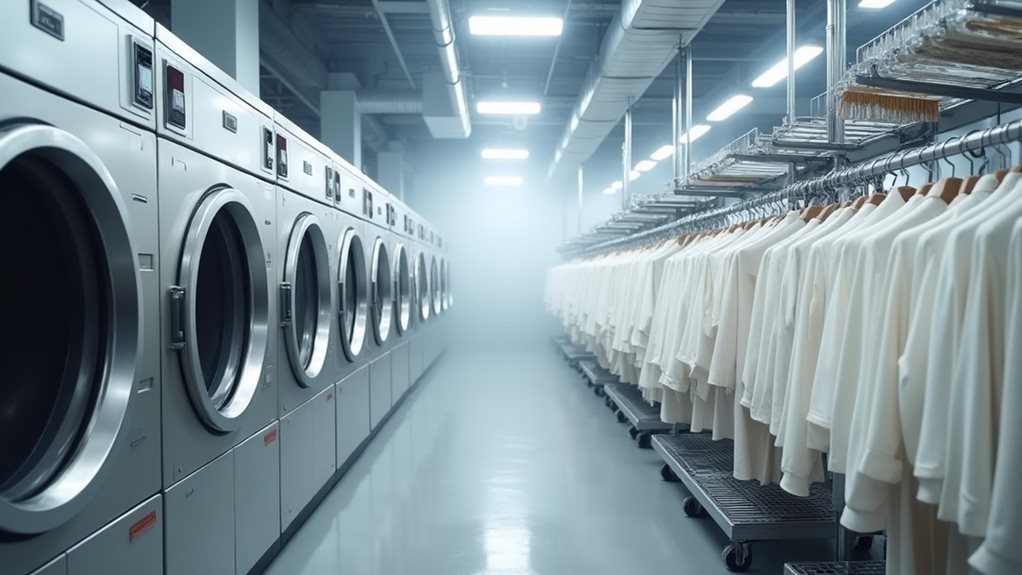
Five essential steps transform your wrinkled, stained garments into crisp, professional-looking clothes, and honestly, watching this process unfold at my local dry cleaner felt like witnessing magic the first time I paid attention!
The transformation from wrinkled mess to pristine perfection truly feels like witnessing pure magic unfold before your eyes!
Each garment receives meticulous care through Inspection and Tagging, where technicians examine every fabric for damage and stains before assigning unique identification tags.
Pre-Spotting follows, targeting stubborn marks with chemical solvents that’ll break down tough stains.
The actual Dry Cleaning happens in a specialized machine using non-water solvents to eliminate dirt without damaging delicate fabrics. These machines commonly use perchloroethylene or other chemical solvents to dissolve oils and grease while preserving the integrity of sensitive materials like silk and wool.
Post Spotting guarantees quality through:
- Final stain inspection and treatment
- Professional pressing techniques
- Steam application for wrinkle removal
Finishing Touches complete the transformation, delivering garments that look professionally pristine!
Chemical Solvents Used in Dry Cleaning
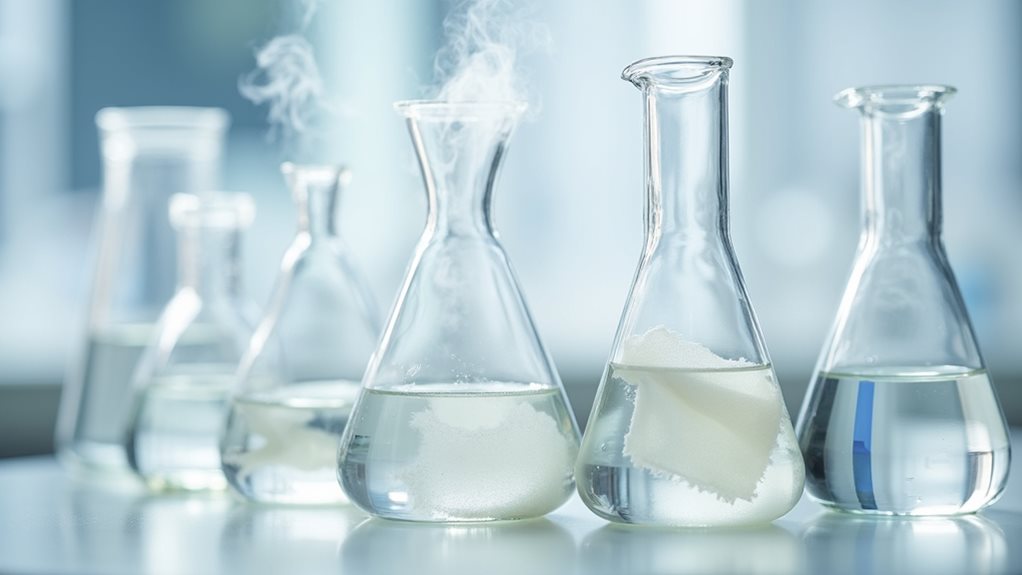
Behind all those professional cleaning steps lies a fascinating world of chemical solvents that honestly made me feel like I was back in high school chemistry class, except this time the knowledge actually matters for your everyday life!
You’ll encounter perchloroethylene as the most common solvent, though environmental concerns have sparked innovation in eco-friendly options like siloxane and liquid carbon dioxide for non-toxic cleaning.
The Environmental Protection Agency’s regulations pushed the industry away from those dangerous petroleum-based solvents that created serious safety risks, much like how we’ve evolved from using gasoline for cleaning (yikes!).
This chlorinated hydrocarbon became the industry standard because of its superior ability to dissolve oils and grease while being non-flammable and recyclable within the cleaning process.
Today’s greener cleaning solutions and biodegradable detergents represent a smarter approach, proving that understanding chemical solvents used in your dry cleaning helps you make informed choices for both your clothes and our planet.
Types of Fabrics That Require Dry Cleaning
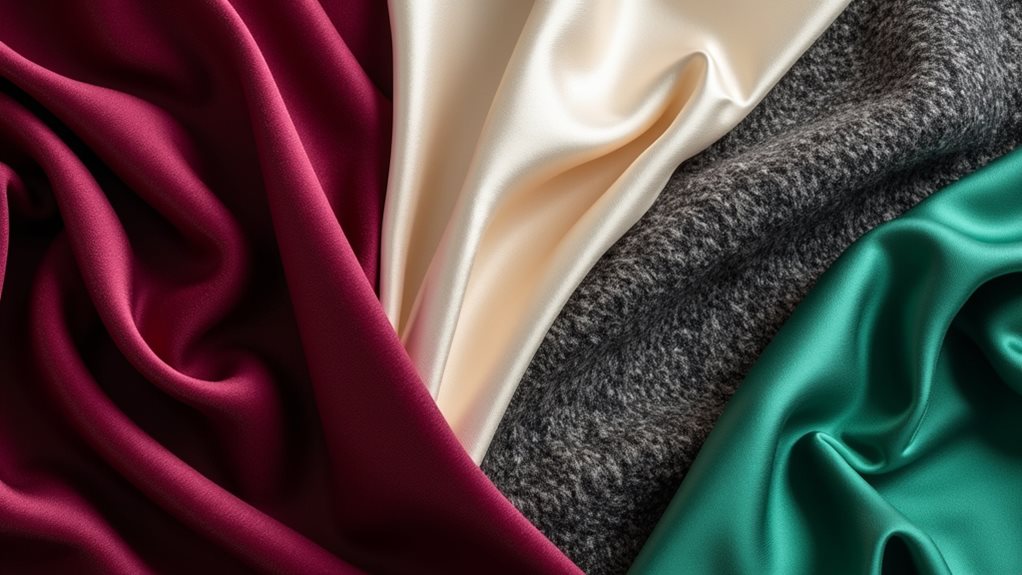
Although I used to think all fabrics were created equal (clearly, my laundry disasters in college proved otherwise), certain materials practically beg for the professional touch that only dry cleaning can provide.
You’ll want to pamper your delicate fabrics like silk, wool, and cashmere, since they’re notorious for shrinking or fading when they meet water.
Consider these fabric categories that need professional care:
- Luxury materials – Suede and leather items require dry cleaning to prevent water damage and maintain their gorgeous texture.
- Formal wear – Your tuxedos and evening gowns contain water-sensitive fabrics that need gentle handling.
- Tough stains – Polyester blends with stubborn spots benefit from professional stain removal techniques.
Garments with special construction features like structured blazers with interfacing, beaded items, or complex linings also need professional dry cleaning to maintain their shape and prevent damage from conventional washing agitation.
Always check your clothing care labels first – they’re like little instruction manuals that’ll save you heartache!
Environmental Impact and Green Alternatives
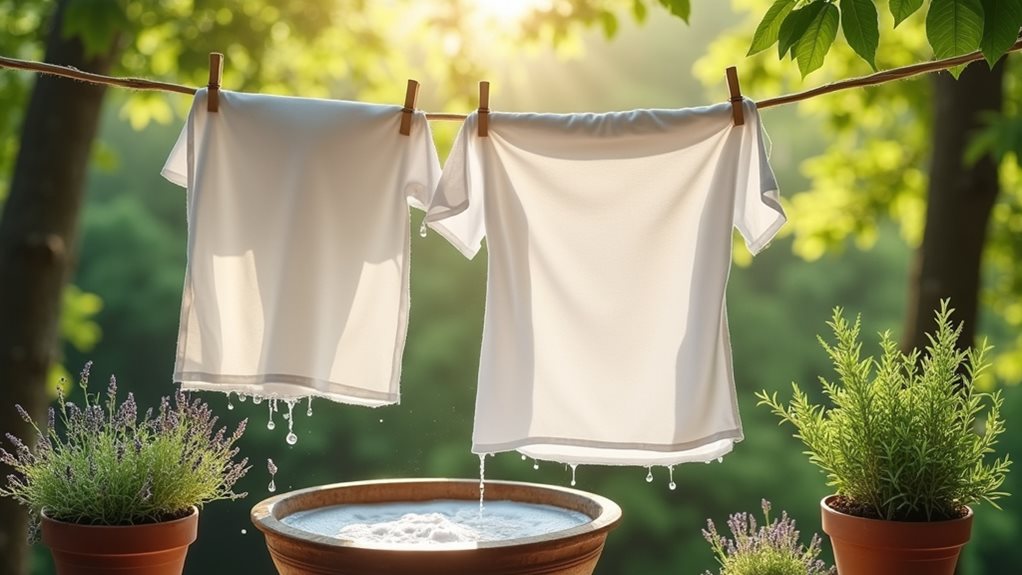
While we’re busy protecting our precious fabrics from water damage, it’s worth considering how traditional dry cleaning methods might be harming something even more precious – our planet and our health.
That trusty perc solvent I mentioned earlier? It’s actually linked to serious health risks, including cancer and neurological issues, which is why the EPA phased it out of residential facilities in 2020.
Studies have suggested potential links between PERC exposure and bladder cancer, esophageal, and kidney cancers, though definitive proof in humans remains limited.
Thankfully, you’ve got fantastic green alternatives now! Liquid carbon dioxide cleaning offers a completely non-toxic solution that’s reusable, while wet cleaning uses biodegradable detergents with water for delicate fabrics.
These eco-friendly methods dramatically reduce environmental impact without compromising quality. Your clothes stay pristine, and you’re supporting a cleaner future – that’s what I call a win-win!
How Dry Cleaning Differs From Traditional Washing

When you peek inside your laundry room and then imagine a professional dry cleaner’s workspace, you’re looking at two completely different worlds of fabric care.
While traditional washing dunks your clothes in sudsy water, dry cleaning pampers delicate fabrics with chemical solvents like perchloroethylene, keeping that silk blouse from becoming a dish rag 😅.
Dry cleaning treats your delicate fabrics like royalty while regular washing can turn them into cleaning rags.
Here’s what makes dry cleaning special:
- Stain expertise: Pre-spotting and inspection target oil-based stains that laugh at your home washer.
- Garment safety: Specialized equipment protects fabrics that water would destroy.
- Professional process: Multiple careful steps versus your one-and-done wash cycle.
You’ll notice dry cleaning excels with greasy stains, while traditional washing handles water-soluble stains beautifully.
Think of it this way: dry cleaning is fabric surgery, requiring expert hands and precise tools.
The chemical solvents dissolve dirt and oils without causing fabric damage, shrinkage, or color bleeding that water-based cleaning often triggers.
Maximizing Results From Your Dry Cleaner
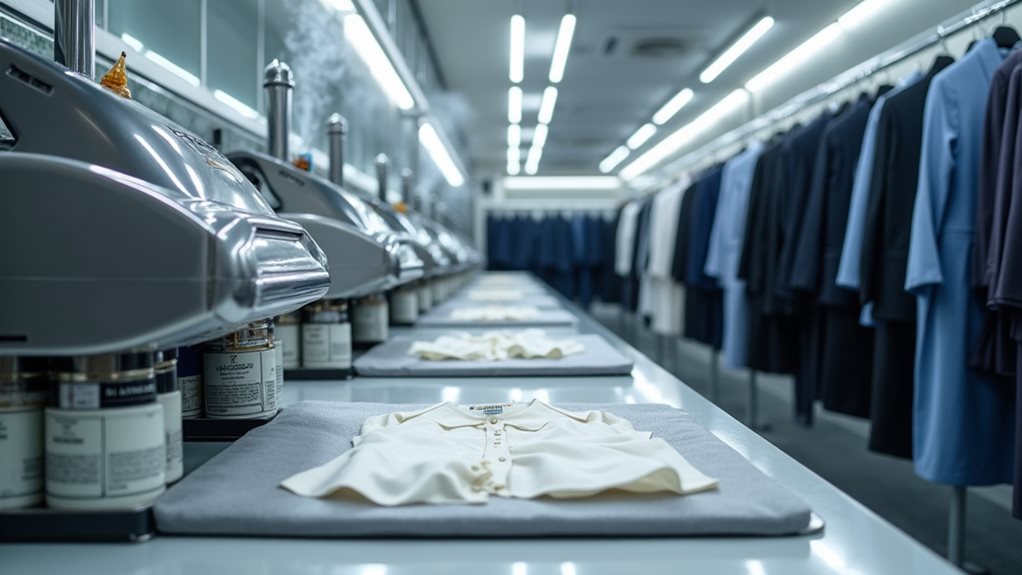
Since you’ve invested in professional dry cleaning, you’ll want to squeeze every drop of value from that service by becoming the kind of customer who gets exceptional results.
Start by checking garment care labels religiously—I learned this lesson after ruining my favorite blazer by assuming it needed dry cleaning when it actually preferred gentle washing 😅.
When you visit reputable dry cleaners, always communicate about stains and their sources, because this information enables proper pre-treatment and dramatically improves your chances of successful stain removal.
Avoid the temptation to use regular detergents on dry-clean-only items, as this cleaning method simply isn’t designed for effective cleaning and often leaves residue.
Choose quality service providers with solid reviews, and you’ll consistently receive the proper care your garments deserve.
The dry cleaning process uses chemical solvents instead of water to clean your clothes, which means it can safely handle delicate fabrics and intricate embellishments that might be damaged by traditional washing methods.
Cost Considerations and When to Choose Dry Cleaning
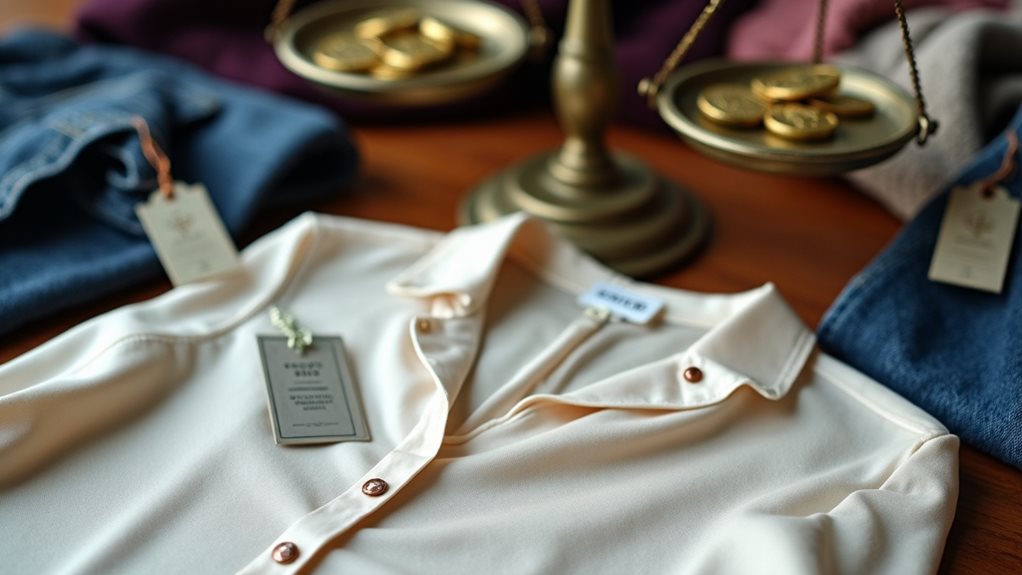
When you’re standing in your closet holding that gorgeous silk blouse you splurged on last month, wondering whether to toss it in the washing machine or trek to the dry cleaner, the decision often comes down to three key factors that’ll either save or cost you money in the long run.
Understanding how dry cleaning prices work, comparing those costs against your regular laundry routine, and making smart choices about which garments truly deserve professional treatment can help you protect your favorite pieces without breaking the bank.
I’ve learned the hard way that skipping dry cleaning on a “dry clean only” cashmere sweater to save fifteen bucks can easily turn into a $200 lesson when that sweater shrinks to doll-size proportions! 😅
Smart shoppers can reduce their dry cleaning expenses by bundling items together, comparing rates between local cleaners, and learning to distinguish between garments that absolutely require professional care versus those that can be safely maintained at home.
Dry Cleaning Pricing Factors
Three main factors determine how much you’ll spend at the dry cleaner, and understanding them can save you from those wallet-shocking moments I’ve experienced too many times 😅.
Dry cleaning prices fluctuate based on these key elements:
- Fabric type and garment complexity – Your silk blouse costs more than cotton shirts, while beaded evening gowns require specialized cleaning requirements that’ll definitely hit your budget harder.
- Geographic location – Urban areas typically charge premium rates compared to rural locations, sometimes doubling the cost for identical services.
- Available savings opportunities – Smart shoppers leverage bulk cleaning discounts, first-time customer promotions, and loyalty programs to reduce expenses.
Before automatically choosing dry cleaning, check garment care labels carefully, because you might discover some items don’t actually need professional cleaning, saving unnecessary costs. Additional factors like rush services and difficult stains can significantly increase your final bill beyond standard pricing.
Cost Vs Home Washing
Although I’ve made my share of costly laundry mistakes over the years, I’ve learned that deciding between dry cleaning and home washing really comes down to weighing the true cost against your garment’s value and care requirements.
While dry cleaning runs $10-30 per piece compared to pennies for home washing, delicate fabrics like silk deserve that investment to avoid disasters I’ve witnessed firsthand 😅.
Those “dry clean only” labels aren’t suggestions—they’re lifelines for preservation.
I’ve found that expensive or sentimental pieces justify professional care, especially when regular dry cleaning tackles stubborn stains that traditional washing can’t handle.
Consider your garment value carefully; sometimes spending more upfront saves money by extending lifespan greatly.
Basic items like shirts and blouses typically cost much less at $3-8, making professional cleaning more accessible for everyday garment type maintenance.
Budget-Friendly Cleaning Decisions
Smart shopping habits have taught me that making budget-friendly cleaning decisions requires the same strategic thinking I use at the grocery store, where I weigh quality against price with every purchase.
When you’re budget-conscious like me, understanding garment care labels becomes your superpower – it prevents unnecessary trips to dry cleaners that could’ve been avoided. I’ve learned to reserve professional cleaning for delicate fabrics and items marked “dry clean only,” especially sensitive materials like silk that I’d absolutely ruin at home.
Here’s my cost-effective approach:
- Check for tough stains that actually need professional treatment
- Bundle items together to maximize loyalty programs discounts
- Consider the environmental impact versus necessity
This strategy has saved me hundreds while keeping my favorite pieces looking pristine! 💰
